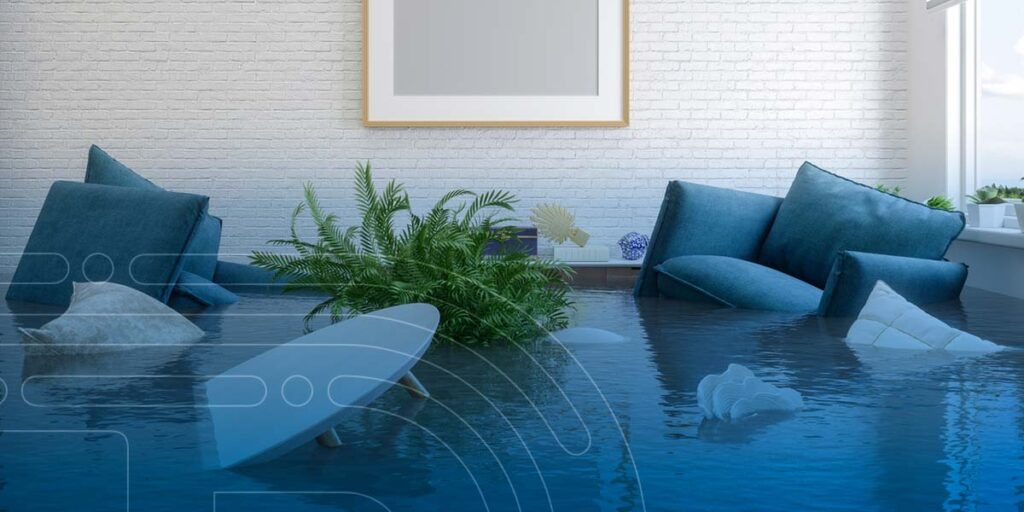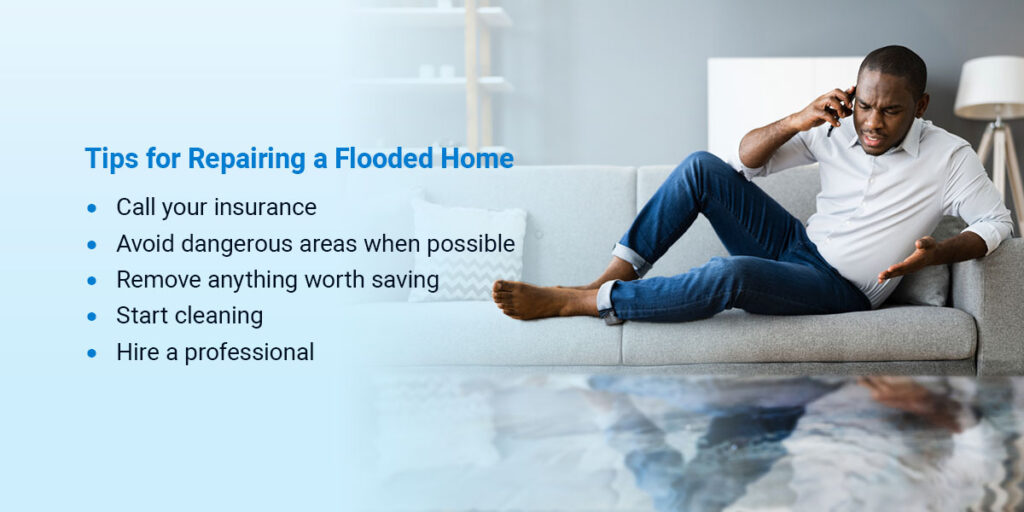
Even if you have only lived in Missouri for a few years, you recognize the growing issue of flooding in the state. From an almost year-long flood in 2019 to frequent flash floods, every Missourian has experienced the severity of our state’s floods and knows the importance of protecting against flooding.
If you’re a homeowner, the threat of flooding is even more intimidating. Water damage can contribute to decreased home value and expensive repair costs. Cleaning out a flooded home is costly, stressful and challenging. It’s not always possible to prevent flooding or flood damage, but having home and flood insurance can greatly relieve your stress and ensure that your home gets back to normal in no time. Read further for other ways to protect your home from flooding and learn some essential flood damage tips for when disaster strikes.
Flooding is a threat every property owner should take seriously. Follow these tips for preventing water damage and safeguarding your home against this hazard.
Flood plains are the land surrounding a river and are prone to extreme flooding. Due to the large volume of lakes and rivers in the Midwest, flood plains make up a lot of the land, so you probably live near one. For example, a flood plain surrounds St. Louis, making it more susceptible to flooding and flood damage. If you live in a flood plain or flood-prone area, check out the following flood damage tips to prevent water damage in your home.
Ensuring there are no cracks in your home’s foundation is essential for flood prevention and protecting your home from water damage. Check your foundation routinely and fill in any compromised areas. You can do this yourself by buying masonry caulk or mortar, or you can opt to hire a professional. Keeping up with foundation maintenance at least yearly is essential to preventing your home from flooding.
In this digital age, so many devices simplify our lives. Flood sensors are one of those devices! Purchasing a smart water sensor can save you money and preserve your house. These sensors will detect possible water leaks and flooding, pipe temperature in the winter and more. Install one in your home and connect it to your smartphone, and be in the know about potential flooding even before the news stations.
If you live in a flood-prone area, keeping up with regular maintenance is the wisest way to protect your home from floods. Fixing leaks and foundation issues, installing window wells and raising the outlets on your walls can all help prevent flood damage and reduce the water damage if your house floods. Staying ahead of flooding and taking quick action will better position your home to defend against floods.
A sump pump is a device that pumps water out of basements when flooding occurs. Sump pump flood protection gives you peace of mind if your basement floods. You can have more than one pump, depending on your home’s size, and they only need biannual service to ensure they work properly.
You can also opt to have a battery backup for your sump pump in case of a power outage. That way, if your power goes out during a storm or flood, the pump can continue removing water from your home, preventing further damage.

While homeowners insurance is necessary, unfortunately, it doesn’t cover flood damage. If you are a homeowner in a flood-prone area like Missouri, we highly recommend getting flood insurance in addition to your homeowners policy. This additional coverage will ensure that even when your house gets flooded, you have measures in place to protect you, your home and your valuables.
What happens if your house gets flooded? Ideally, you have flood insurance! But if you need additional assistance and want to learn what to do if your house floods, here are our top flood damage tips for home restoration after water damage:

Even a small water leak can become a significant problem, usually sooner than you might think. Regardless of the size of the leak, water can spread rapidly and seep into floors, furnishings, walls and other parts of your home. Leaving water damage untreated for too long can turn into significant damage that becomes a hefty repair bill.
Below is the general timeline for water damage and what happens at each stage:
Below are some commonly asked questions about water damage and repairing flood damage:
You should consider water damage as one of the most severe emergencies that can occur within your home. Left untreated, standing water can cause significant and costly damage to your home and its structure. Regardless of how water has entered your home, it’s essential to take care of it as soon as possible.
Sometimes, the signs of water damage are immediately noticeable. Other times, it can take hours or even days for them to become apparent. As soon as you notice water damage, you should act quickly and safely to ensure your health and home aren’t at risk.
Unfortunately, this usually isn’t the case. Even if mold dries, it doesn’t mean that it dies, or you no longer have to worry about it. Dry mold will become dormant until a new humidity or moisture source causes it to reactivate and grow, increasing the risk of airborne particles that can affect your health.
If you notice mold in your home, taking care of it as soon as possible is essential.
Water damage can usually dry on its own in five days to a few weeks depending on the extent of the damage. However, you don’t want to wait for the water to dry, leaving your home, personal items and health vulnerable to damage and other problems. You should always address water damage immediately to prevent mold growth, structural damage and other damages to your home.
Water will damage each part of your home differently. For example, furniture could become irreparably damaged if you don’t take care of water damage immediately. Hardwood floors are also highly susceptible to water, and the planks can start to bow after just a short time exposed to water.
Ideally, you’ll want to take care of water damage immediately to prevent unnecessary damage to your home or personal property. A professional can help you remove water and restore different parts of your home quickly, allowing you to save your investment and protect your home and health.
Having flood insurance is the easiest way to avoid cleaning your damaged home yourself. Depending on the water damage, your flood insurance could offset the costs of replacing furniture, compensate you for damaged valuables and cover flood repair service. Flood insurance is an obvious choice if you live in a flood plain or anywhere where floods are common.
While many states have passed legislation to prevent flooding and provide residents with disaster relief, Missouri does not yet have measures to provide individual relief from flooding. That’s why home flood insurance is necessary for Missouri homeowners.
In addition to individual insurance coverage, you can apply to the National Flood Insurance Program. This government program offers homeowner flood protection grants to residents in participating locations. However, the Missouri Department of Public Safety recommends that homeowners also get individual flood protection through their insurance provider.
If you live in a flood-prone area, you know the dangers of flooding and how scary these disasters can be. That’s why at David Pope Insurance, we offer flood insurance to protect your home from floods and water damage and ensure your safety. Call us now to ask about our flood insurance policies and request your free quote today!